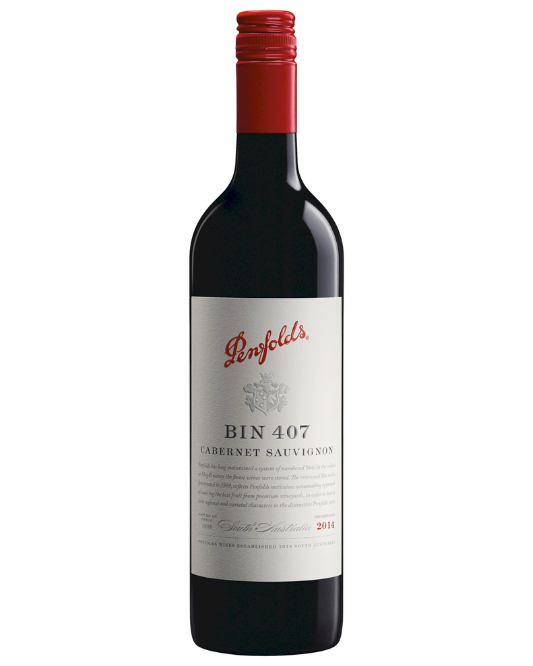Free shipping
We offer Free Shipping on order over $300 in VIC or over $100 within 5km (T&C Apply).
$0.00 AUD
🔥Get All Wines over $200 for 5% off with this code: SIP5


Couldn't load pickup availability
Out of stock
Penfolds Bin 407 began life back in 1993 with the release of the 1990 vintage Cabernet Sauvignon. Created as a result of the availability of high quality Cabernet fruit, Bin 407 is inspired by its older brother, Bin 707. Not only offering varietal definition, but also approachability, structure and depth of flavour. The 2013 vintage highlights the Penfolds approach to multi-region, multi-vineyard blending to create a Cabernet that rewards the drinker in both early and later years.
Producer tasting notes: "COLOUR Bright garnet NOSE Savoury spices (paprika, curry leaf) with beetroot, blackcurrant conserve and cassis varietal markers regally ascend. Less noble yet endearing wafts of Mediterranean meat(s)-on-a-spit, and a suggestion of oak/char. No herbaceousness, tomato-leaf or black olive or graphite immediately evident�however, darkened tarry and bitumen aromas abound. PALATE Tight, solid, assertive �handles oak well. Impressive mid-palate adorned with pronounced Cabernet tannins and a refreshing acidity. Reassuring flavours including black olive and pomegranate alongside a fanciful impression of carpaccio slivers of seared venison. A (powdery) sprinkling of cocoa powder, mocha, shaved bitter chocolate and walnut husk adds further interest" - Penfolds
Drinking Window: 2016-2033
Vineyard Notes: McLaren Vale, Padthaway, Coonawarra, Wrattonbully, Barossa Valley
Vintage Notes


🛻Free Local Delivery on orders over $100 within 5km.
🚛Free Shipping over $300 in VIC, over $500 in All Other States Excluding NT. (T&C Apply)
Warm Tip: Please contact us at sipcellars@gmail.com or 0481 986 158 before visiting to ensure your pickup order is ready. Some items may need to be transferred from our warehouse. Thank you for your understanding!
We offer Free Shipping on order over $300 in VIC or over $100 within 5km (T&C Apply).
We offer a straightforward return policy to ensure your satisfaction.
We're committed to providing you with premium fine wines & spirits with a good price.
We're here for you. Don't hesitate to contact us if you need any help.
